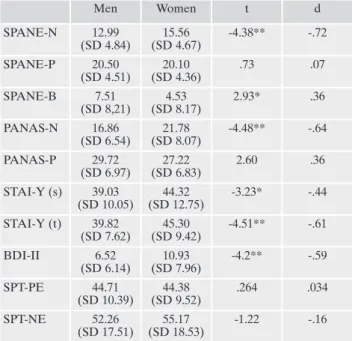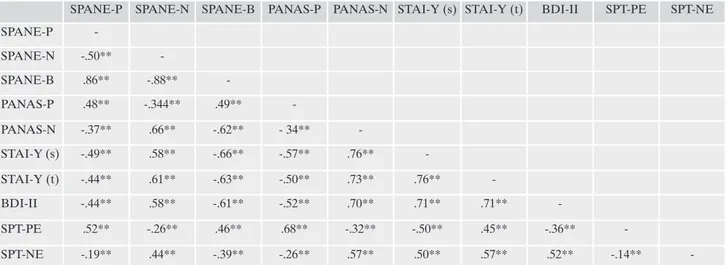Assessing positive and negative experiences: validation of a new measure of well being in an Italian population
Texto completo
Figure


Documento similar
The aspectual interpretation of anche results from the type of element it takes scope over, namely the vP (see below sections 4.3 and 5). This analysis easily accounts for the
Reconstructed momentum distributions for positive (dots) and negative (solid line) backward going tracks for different intervals of the track length. The heights of the
model composed of two affect dimensions (one factor dominated by anxiety, depression, NA and expectancies for future negative events, and the second factor dominated by depression
252 All fatalism scales had a negative correlation with measures of well-being, both with 253 subjective well-being indicators (i.e. life satisfaction) and with social well-being
50 The goal is to help people to reach an optimum level in the dimensions of psychological well- being: environmental mastery, personal growth, purpose in life,
The aim of the present study was therefore to examine the independent impact of the well-being components (positive affect, negative affect, and evaluative well-being) on
In this sense, the literature has shown that, while people are usually quite accurate at forecasting the valence of future emotional experiences (i.e., negative or positive) or
The systematics of the energy spectra and transition rates, associated with both positive- and negative-parity yrast states, points to the onset of notable octupole correlation around